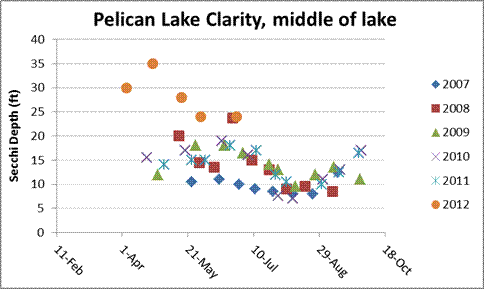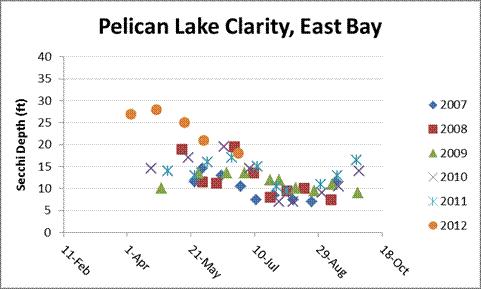
Pelican Lake Clarity
By Moriya Rufer, PGOLID Lake Coordinator
The Pelican Lake clarity is
usually best in the middle of the lake, just north of Fish Lake.
The east bay of the lake, Fairhills Bay, usually has lower clarity
because the Pelican River enters the lake on that end.
The Pelican River contributes 75% of the nutrient loading to Pelican
Lake.
The west end of the lake typically
has the same or better clarity than the east end.
The west end of the lake has two small inlets, Spring Creek and Bob
Creek, which contribute nutrients, but not at the levels of the Pelican River.

As of June, the 2012 clarity in
Pelican Lake has been at record levels (see orange circles on the three graphs
below). This early season record
clarity is most likely due to the lack of a significant snow melt and a dry
spring rather than zebra mussels.
Other lakes in the area also experienced record clarity in spring of 2012, and
they don’t have zebra mussels. In
addition, zebra mussels aren’t active in April and early May when the record
clarity occurred.
In 2012, the middle of the lake
reached a clarity of 35 feet, while the west end reached 30 feet and the east
end reached 28 feet.


